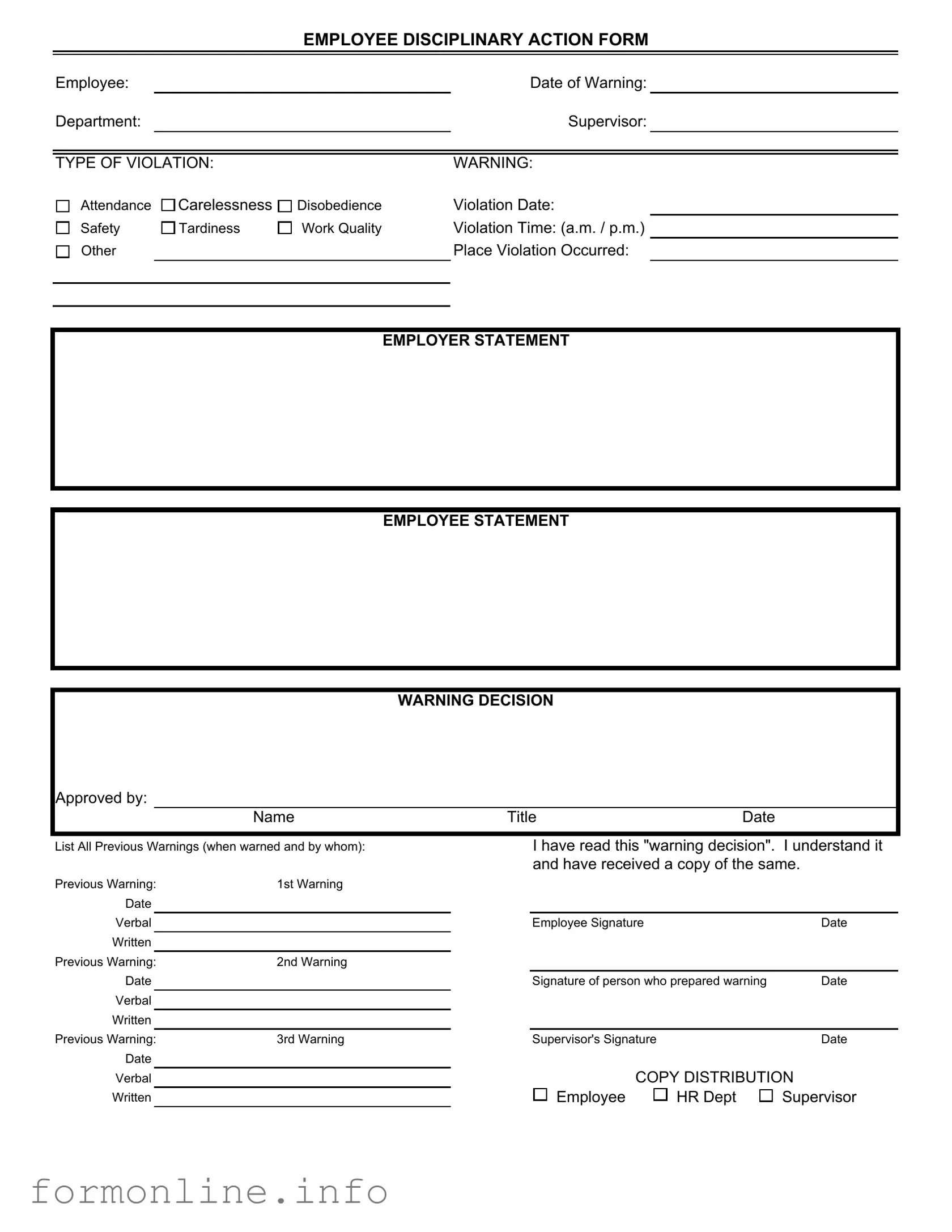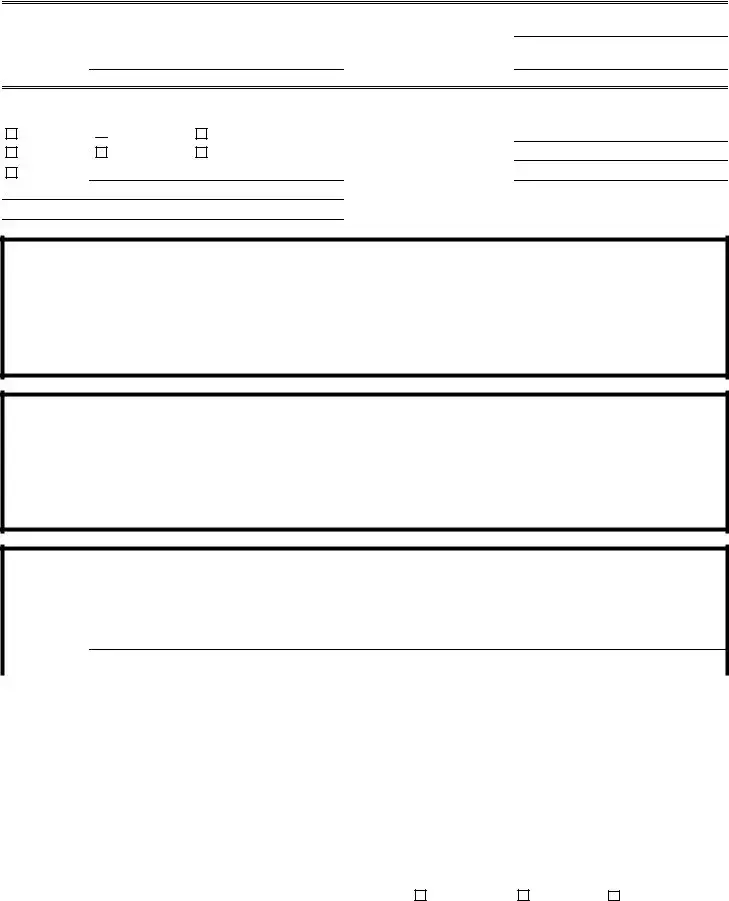In the workplace, maintaining a standard of conduct is essential for a productive environment. The Disciplinary Action form serves as a crucial tool for documenting employee violations and the subsequent actions taken by management. This form captures key details, such as the employee's name, the date of the warning, and the department involved. It outlines the type of violation, which can range from attendance issues and carelessness to safety concerns and tardiness. Both the employer and employee have spaces to provide their statements, ensuring that all perspectives are considered. Additionally, the form records the decision made regarding the warning, including the approval from a supervisor. A history of previous warnings is also included, allowing for a comprehensive view of the employee's conduct over time. This form is not just a record; it is a communication tool that reinforces accountability and provides clarity on expectations moving forward. Understanding the components of this form can help employees navigate the disciplinary process with confidence and awareness.


 Carelessness
Carelessness